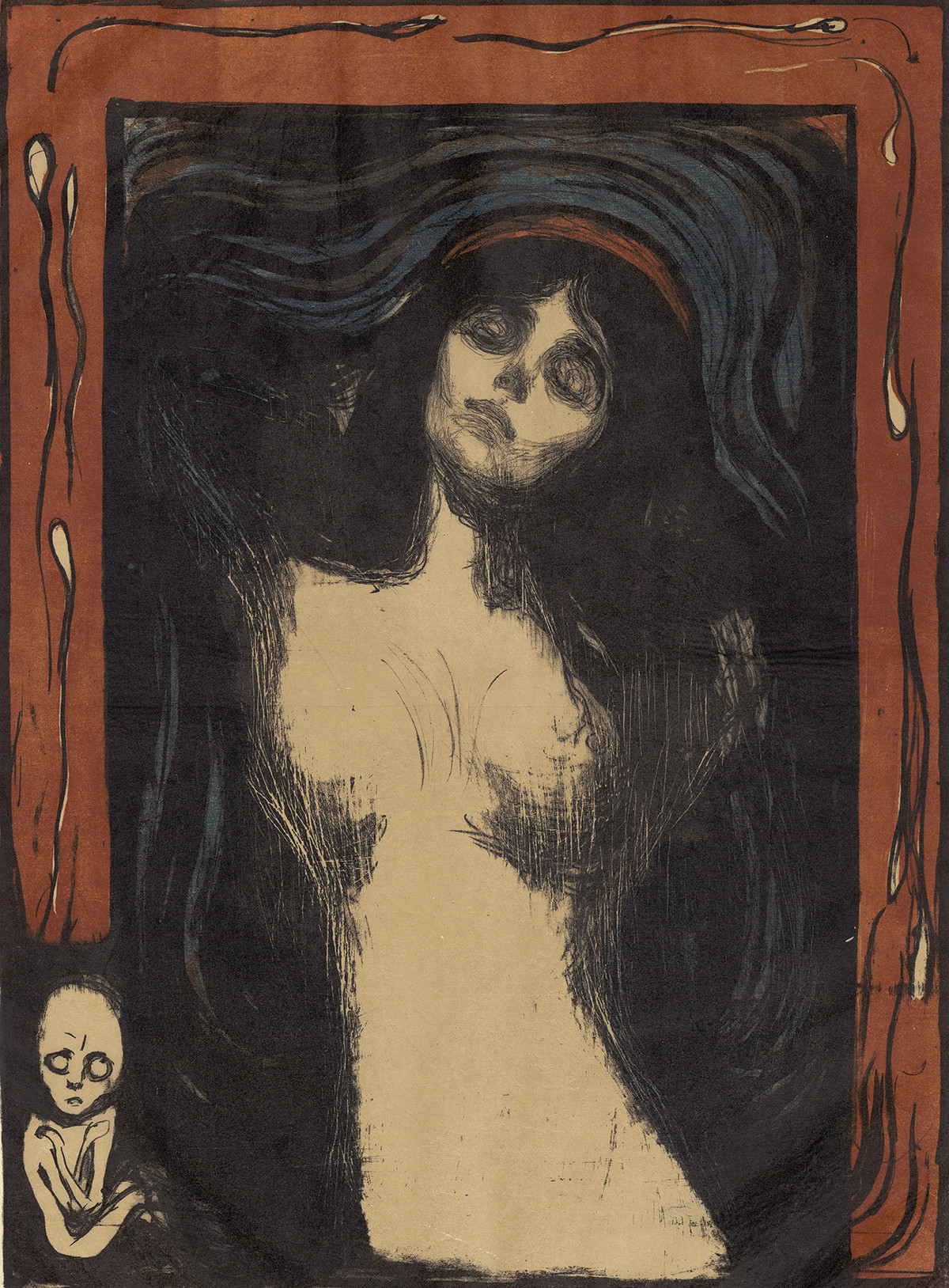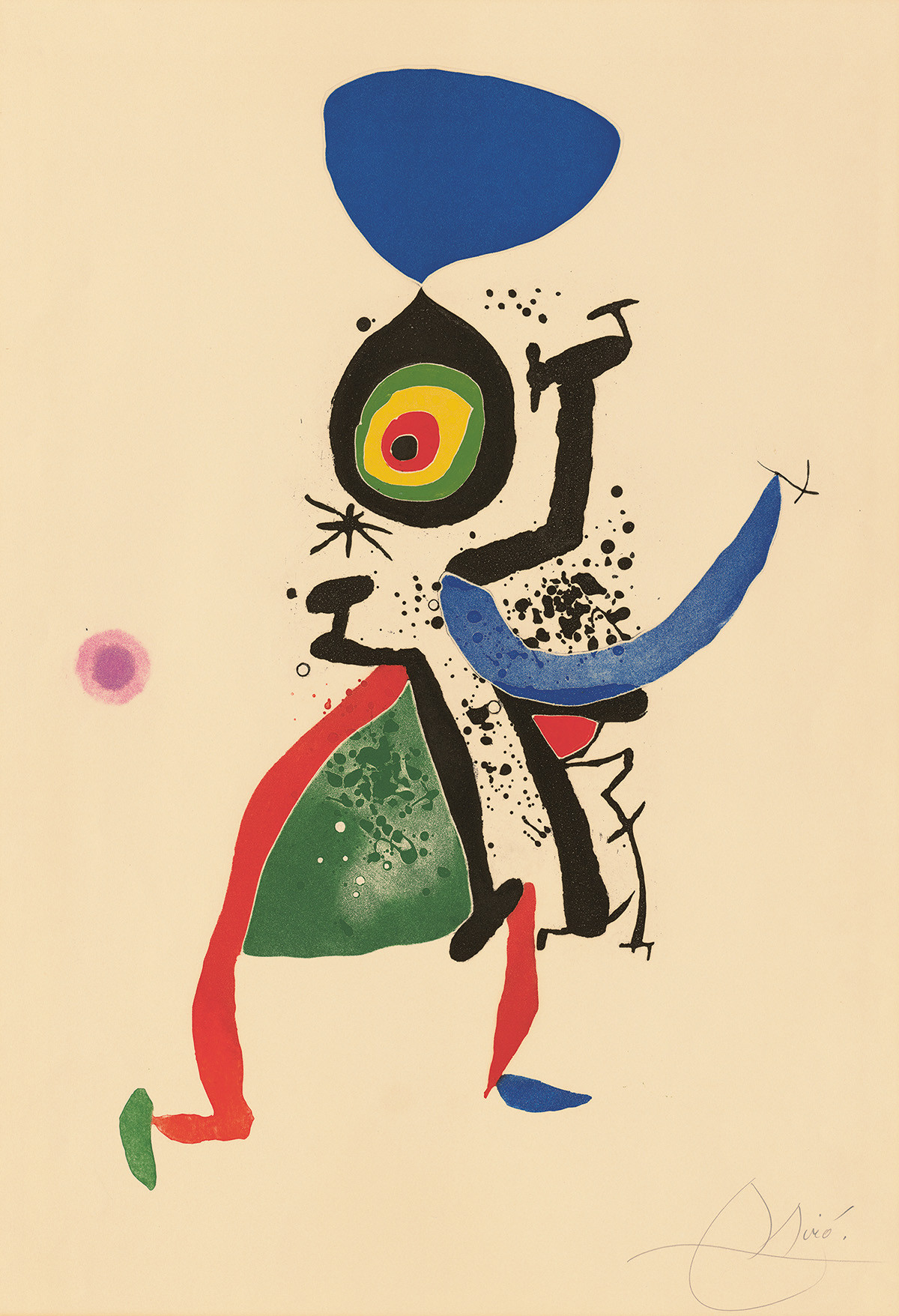Dürer, Munch, Miró
The Great Masters of Printmaking
Until 14 May 2023
Stay up-to-date
Sign up for our newsletter
ALBERTINA Tickets
Get your tickets online!
The ALBERTINA presents a retrospective of the history of printmaking over a period of six centuries, from Albrecht Dürer and Henri de Toulouse-Lautrec to Kiki Smith and Damien Hirst. The two exhibitions planned as a pas de deux - at both ALBERTINA locations - span from works of the late Middle Ages to the prints of contemporary art. The two exhibitions are joined by a third, as it were, dedicated solely to the most important printmaker of the 20th century: Picasso.
The first exhibit, Dürer. Munch. Miró - The Great Masters of Printmaking will open at the ALBERTINA at the end of January. It presents outstanding works of the so-called 'Old Masters' - including Albrecht Dürer, Pieter Bruegel, Rembrandt van Rijn - and leads up to the impressive works of modern and contemporary art.
The second part of the exhibition will be at the ALBERTINA MODERN from the end of February. It presents 20th century artist that radically broke with the tradition of printmaking and found a new monumentality in the technique of silkscreen printing in the 1960s.
Dürer. Munch. Miró.
The exhibition begins with the most outstanding works by Martin Schongauer and Albrecht Dürer at the ALBERTINA. This is continued with the engravings of Hendrick Goltzius and Pieter Bruegel’s only etching.
Modern art is introduced by the magnificent lithographs of Henri de Toulouse-Lautrec and the Norwegian Edvard Munch's revolutionary, symbolist-expressionist woodcut. Munch plays a central role in the modernization of the traditional woodcut and a major influence on the German expressionist prints by Emil Nolde, Ernst Ludwig Kirchner, and Karl Schmidt-Rottluff.
The works of Marc Chagall and Joan Miró will close the exhibition. Important women artists will be represented by Käthe Kollwitz, the recently deceased Portuguese Paula Rego, and the Austrian artist Florentina Pakosta. This overview attests to the development of diverse printmaking techniques throughout 600 centuries
Printmaking: from its Beginnings to the Present Day
The invention of printing is one of the greatest artistic achievements of the late Middle Ages. The mass reproduction of images only became possible in Central Europe with the arrival of paper production in the late 14th century.
The development of the printing technology business unfolded as follows: Woodblock printing appeared in the early 15th century, copperplate engraving before the middle of the century, and etching shortly before 1500. Printmaking became an independent art genre that soon equaled painting. Compared to woodcut and copperplate engraving, which required more work and material costs, etching offered greater scope for artistic experimentation and creative freedom. Due to the spontaneous ductus of its line image, it is closer to drawing than other printing techniques. Starting in the early 19th century, lithography then allowed large print editions without loss of print quality. From the 1960s onwards, a groundbreaking redefinition of printmaking emerged: the principle of serial work and the magnification of the medium were discovered by both female and male artists.
Throughout the centuries, artists have explored the various techniques of printing - initially with gouges and gravers, later with drypoint, then with etching processes, up to the complex chemical steps of lithography. This medium conquered all European countries - from Spain to the Netherlands, from Germany to Italy and via Norway to England. The variety of subjects used by artists is as diverse as the technique itself: Portraits, landscapes, sacred stories or socially critical images.
In the exhibition of "Great Masters of Printmaking" masterpieces such as Albrecht Dürer's Knight, Death and the Devil, Munch's The Kiss or Miró's Abstract Composition are on display. Rembrandt's work, the so-called Hundred Guilder Print will also be exhibited. This valuable work of art work cost a hundred Guilder and became famous under that name. Like no other collection in the world, the ALBERTINA is able to exhibit the history of the graphic arts with the most outstanding pieces taken from its own collection.
On view at the ALBERTINA Museum from 27 January until 14 May 2023.
___
Andy Warhol bis Damien Hirst - The Revolution in Printmaking
On view ath the ALBERTINA MODERN from 24 February

EXHIBITION PROGRAM
Public guided tours (in German)
Learn about highlights and backgrounds of the exhibition in a one-hour guided tour of the exhibition.
Dates & tickets
For private or school tours, please contact our Art Education Department on weekdays between 9:00 am and 4:00 pm at +43 1 534 83 540 or .
PLAN YOUR VISIT
Opening hours The ALBERTINA Museum, Vienna
Daily | 10 a.m. to 6 p.m.
Wednesday & Friday | 10 am to 9 pm
Tickets are available on site at the ticket desks during museum opening hours or in our webshop. The ticket is valid for all exhibitions of the museum that are accessible on the day of your visit.
Audioguide
EUR 3 | At the museum & online
German | English | Spanish | French | Italian
To enjoy a relaxed visit, take advantage of hours when the museum is known to be less frequented: the early afternoons on weekdays or after 5:00 pm. On weekends and public holidays we also recommend visiting between 1:00 and 3:00 pm or in the evening.


Related
Der Katalog zur Ausstellung:
The Print
EUR 39, 90 | Deutsch
Der Katalog präsentiert die Geschichte der druckgrafischen Künste, zeigt Beispiele für Holzschnitte und Kupferstiche ebenso wie Radierungen, Linolschnitte, Lithografien und auch unbekanntere Techniken wie Aquatinta, Mezzotinto, Schrotschnitt oder Zinkografie. Ein umfangreiches Glossar erklärt Herkunft und Entwicklung der einzelnen druckgrafischen Verfahren. Kapiteltexte erläutern die Bedeutung der Druckgrafik im Werk einzelner Künstler sowie verschiedener Epochen.
Private tours through the exhibition
Book now!
ALBERTINA Tickets
Get your tickets online!

















